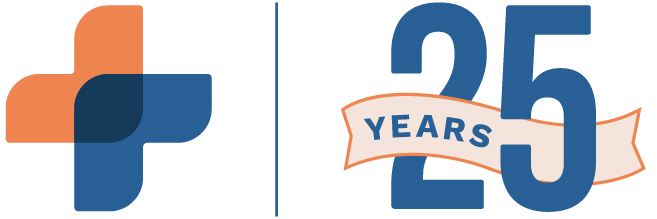The effect that COVID-19 has had on the American healthcare industry as well as the health and wellness of the population cannot be overstated. Technology has been generated at a record pace in response to overwhelming needs, particularly in the busy field of mental and behavioral health.
Technology augmentations have been developed to meet the increasing needs of mental and behavioral health issues facing individuals, such as those dealing with increased stress and anxiety from sheltering in place, rising unemployment, and an overwhelming number of deaths.
Effective clinical assessment tools to recognize mental and behavioral health disorders are one of the challenges facing practitioners in meeting the increased needs. Using previous industry-standard assessment tools as a base, digital tracking tools more efficiently and accurately track and evaluate patient behavior. These developments have the potential to capture the fluctuating nature of depression, anxiety, and many other mental and behavioral health concerns while also reducing barriers to entry.
The Basics of PHQ-9 Assessments
The typical Patient Health Questionnaire-9 (PHQ-9) form was a validated, nine-question assessment tool printed and given to patients both in primary care and psychiatry clinics to screen for the presence and severity of depression. Originally developed from the 26-item Primary Care Evaluation of Mental Disorders (PRIME-MD) diagnostic tool created in the 1990s by Pfizer, the PHQ-9 is a self-reported version of the assessment tool developed by Kurt Kroenke, MD, Robert Spitzer, MD, and Janet Williams, DSW. Traditionally, the questionnaires are administered at fixed points with paper and pencil and are subject to the retrospective recall of the patient. Although it has limitations, for years the PHQ-9 tool has proven to be an effective tool to begin the assessment of depression presence and severity.
According to the Agency for Healthcare Research and Quality (AHRQ), benefits include:
- Improved relationships with patients by using the data to stimulate dialogue.
- Helped clinicians identify and prioritize patient health issues and health goals.
- Helped pinpoint focused messages when talking with patients about what matters to their health.
- Helped patients understand their current health status and act to improve their health.
- Consistently remind patients to increase their awareness about specific behaviors and habits that affect their health or chronic conditions.
- Tracked patient health behaviors over time (e.g., physical activity, smoking, stress, or quality of life), which can also help with patient follow-up.
- Measured and monitored patient data at the practice/population level for proactive, planned care.
Other related forms include the PHQ-2, a shortened version used by the Veterans Administration that contains only the first two questions within the PHQ-9 form. The PHQ-8 form includes all questions on PHQ-9 except the final question about suicidal ideation and is generally used in a research setting with non-depressive patients. The PHQ-15 form is an extended, 15-question assessment tool with symptoms relating to somatoform disorders. The GAD-7 is a seven-question assessment used to screen anxiety. Similarly, the GAD-2 is a shortened anxiety assessment containing only two questions. Finally, the PHQ-SADS form is a combination of the PHQ-9, GAD-7, and PHQ-15 forms, designed to assess somatic, anxiety, and depressive symptoms, as well as panic attacks.
Digital “Smart” Encounter & Intake Forms Solve the Challenges of Traditional PHQ-9 Forms
While the traditional pencil-and-paper PHQ-9 assessment has been successful, self-reported assessments in their traditional form have inherent biases and limitations including poor retrospective recall and social desirability, or the desire to answer questions in a way that may seem favorable to others. Traditional paper PHQ-9 forms also require administrative resources to transfer information and pose risks to accuracy during transfer.
Digital forms and record-taking in digital tools can solve a large portion of these potential risks and improve accuracy, reduce administrative overhead, and remove challenges of patient retrospective recall. In contrast to physically written mood logs, digital patient “smart” forms collect data in real-time and can securely, accurately, and immediately transfer patient data into the patient’s Electronic Health Records chart. From there, the provider can decipher patterns of behavior, provide effective treatments, and set automatically patient alerts or reminders.
These digital encounter forms can also be integrated for chronic care management (CCM) and collaborative care models (CoCM) for more complex patients, or designed and customized specifically for the needs of your practice and/or specialty. Jessica Wagner, COO of RXNT, explains that “smart forms have the ability to capture critical data elements for clinical reporting, create a customized, intuitive experience for the provider, and ensure accuracy from patient intake to billing.”
If you haven’t already, now is the time to move from unsecured, physical assessment forms to digital “smart” forms that are fully-integrated with your medical software. RXNT’s award-winning Electronic Health Records software contains over 1,000 customizable Smart Form templates with everything from PHQ-9 forms to SOAP notes. Learn more about how RXNT can help your Mental and Behavioral Health practice, and schedule a demonstration to see we streamline your workflow, improve accuracy, and enhance security for better mental and behavioral health.





